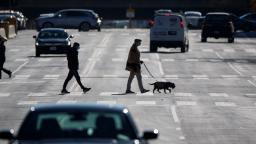[ad_1]

Briggs estimates that there have been some 830,000 “extra retirees” in October, representing a couple of quarter of the distinction between the pre-pandemic workforce and the present workforce.
“We’re not prepared, financially or mentally, to retire,” stated Rachel E. from Virginia, who requested that her final title be omitted to guard her’s and her husband’s privateness.
The 66 year-old former authorities contractor was furloughed in April.
“Six figures a yr to on the spot poverty with two phrases…. ‘you are furloughed.’ It is extra like pressured early retirement,” Rachel advised CNN Enterprise in an electronic mail.
Returning to work is a frightening prospect due to the well being dangers for employees of superior ages. Employers are additionally hesitant to rent older employees who might be extra inclined to getting the virus, Rachel stated.
As soon as employees retire, they don’t seem to be very prone to return to the job. These pressured retirees would fall into the class of everlasting job losses, one thing economists have fearful about because the pandemic started.
Everlasting unemployment is a drag on financial progress, significantly in a consumer-spending pushed financial system like the US.
Over time, the early retirement development ought to unwind, Briggs stated, with the elevated variety of retirees ultimately offset by fewer retirees within the years forward.
However that is of little comfort for many who have been pressured to depart their careers behind as a result of pandemic.
[ad_2]








